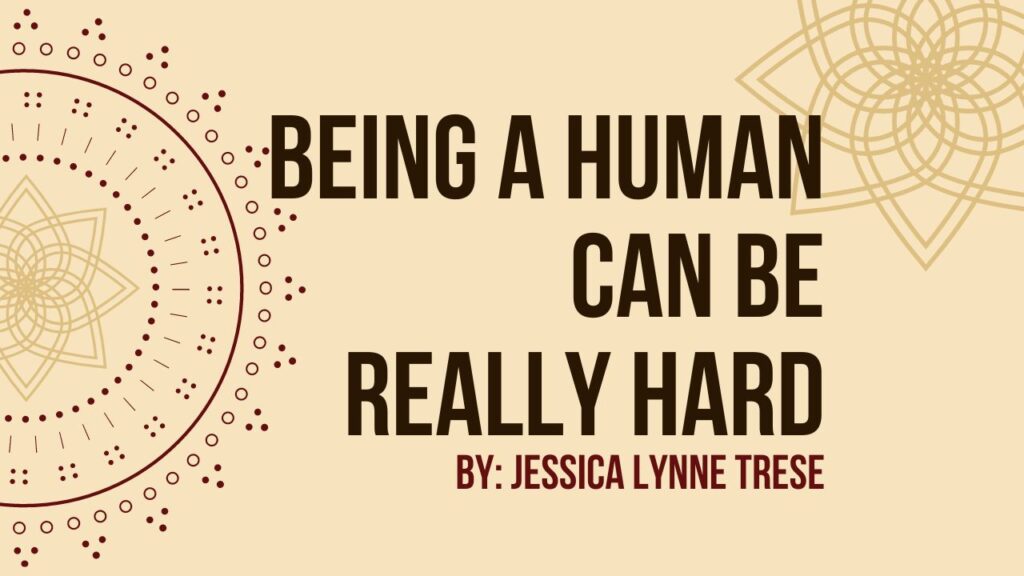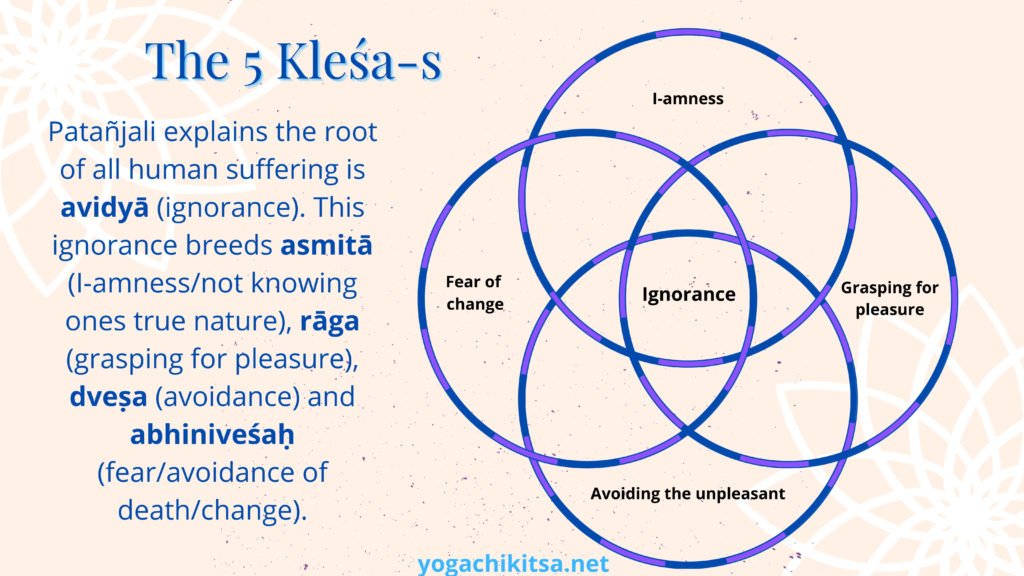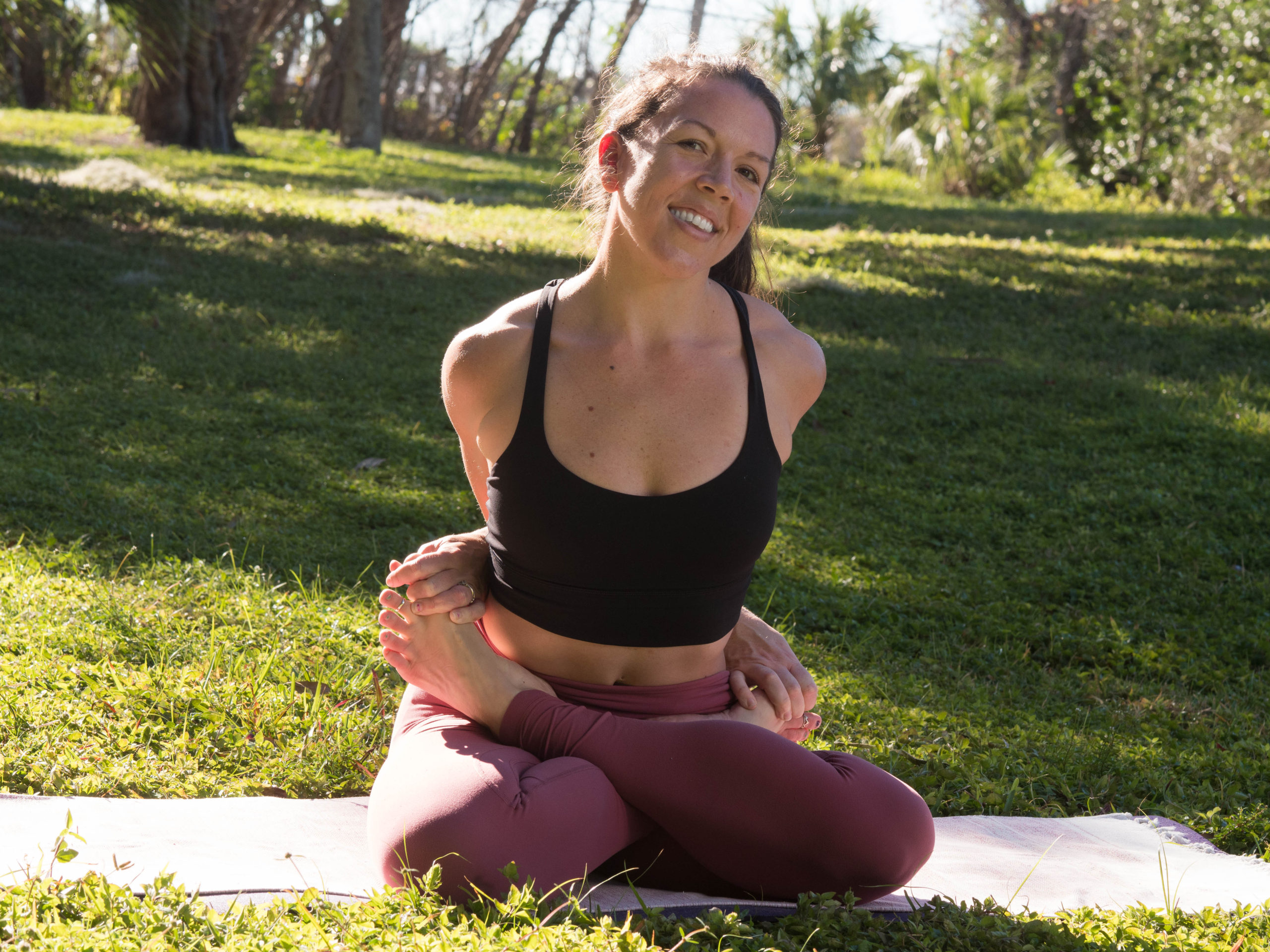
Yes, it is tough to be a human and it has always been hard.
Ancient yoga teachings speak of specific afflictions of being a human and those afflictions are still plaguing us humans in modern times. These afflictions are thought to be something that comes along with the entanglement that is existence and thus, everyone experiences them in their own ways.
The afflictions are called kelśa(s) and all humans share patterns of suffering and mental fluctuations. While all of our individual sufferings are distinct and valid – as a whole, our sufferings can be categorized into 5 broad categories.

Patañjali explains the root of all suffering is avidyā (ignorance). Ignorance is the field in which all the other afflictions of being human grow and prosper. This ignorance is vast and inherent in being human. The path toward reducing/eliminating ignorance is through experience and correct knowledge.
The ignorance spoken about in the yoga sūtra allows the other four afflictions to grow, those are:
- asmitā – false identification of self and others, not knowing ones true nature)
- rāga – grasping after that which is pleasant/desireable
- dveṣa – avoiding that which is challenging/less desirable
- abhiniveśaḥ – avoidance of and fear of change or death
When these afflictions are active within our heart and mind, they rule our experiences and color our perception. We can find ourselves stuck in patterns of self-deprecation, judgment, depression and big feelings/emotions that influence all of our actions and relationships. In short, when these afflictions are active, we experience, contribute to and perpetuate patterns of suffering for us and others.
Patañjali goes on to encourage us, and confirms that these afflictions can certainly be reduced and overcome through kriyā yoga. And, we can even dissolve the root of these afflictions, in all its subtleties, through meditation!
The first sūtra of book two of the yoga sūtra lays out the definition of kriyā yoga, it’s purpose and how it prepares us for the continued journey of yoga. Kriyā yoga is the method that will allow us to overcome the afflictions of existence which cause suffering. That’s right, kriyā yoga is a method to eliminate suffering!
तपः स्वाध्यायेश्वरप्रणिधानानि क्रियायोगः ॥१॥
tapaḥ svādhyāy-eśvarapraṇidhānāni kriyā-yogaḥ ॥2.1॥
Kriyā yoga is comprised of: tapaḥ, svādhyāya and iśvarapraṇidhānām.
- Tapaḥ – to burn or create heat as a means of cleansing and purifying. Also, self-discipline
- Svādhyāya – study of the true Self. Honestly and continually
- Iśvarapraṇidhānām – Devotion and connection to something that is greater than you
Mastery of these supports reducing and eventually overcoming the afflictions that cause suffering. Patañjali expands this definition to explain how and why kriyā yoga will lead students toward samādhi (ultimate mental absorption/bliss).
The path of yoga toward peace begins with dedication, self-reflection and connection to something that is greaster than us/connection to the unknown – Kriyā Yoga. This helps us to reduce patterns of suffering because suffering that has not happened yet can be avoided.
हेयं दुःखमनागतम् ॥१६॥
heyaṁ duḥkham-anāgatam ॥16॥
This might be my most favorite sūtra. It is a reminder that growth is possible, and when we truly work toward a goal of peace, we will feel the affects of the work as our lives unfold. Dear yogi, suffering that has yet to come can be avoided. We may not be able to change the past, but we can certainly have a positive impact on our future and experience more peace and greater joy.
And, it’s worth all the work that goes into it, because: Suffering that has yet to come, can be avoided.
Keep in mind, even on the days when being a human seems impossible to navigate, there will always be ways we can turn inward and care for the space of our own inner realm to weaken/alleviate patterns and tendencies that contribute to and support experiences that are painful.
Devote time to yourself everyday to reflect and connect with yourself. Just a little time, everyday will support you continuing to observe and be curious with yourself, your mind and your heart.

500hr Teacher Training – April 29, 2023
eBook – The Sound The Heart Sings, a journey inward with sacred sanskrit sounds
